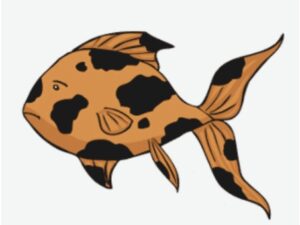The Silver Arowana is one of the most popular fish in the aquarium trade. This fish is a beautiful silver color. They can grow large, up to 36 inches long, and require a large tank. They are shiny and add an attractive glam factor to your freshwater tank or pond.
We will tell you all about Silver Arowanas. We will give you the information needed before you get Silver Arowanas to your home.
This guide covers essential aspects of having Silver Arowana in your tank, like their behavior, diet, appearance, temperament, tank mates, etc. So relax and keep reading.
Table of Contents
- Silver Arowana: Species Summary
- Silver Arowana: Behavior And Temperament
- Silver Arowana: Sexing And Breeding
- Silver Arowana: Food & Diet
- Silver Arowana: Care
- Tank Parameters
- Water Parameters
- Water Changes
- Cleaning The Tank
- Water Conditioners
- Lighting And Heating Requirements
- Filtration Requirements
- Substrate And Gravel
- Aquascaping
- Ammonia And Nitrates Level
- Protein Skimmer And Gravel Vacuum
- Water Test Kits
- Transportation And Handling
- Silver Arowana: Potential Diseases
- Silver Arowana: Preventing Diseases
- Silver Arowana: Treatments And Medications
- Silver Arowana: Tank Mates
- How Many Silver Arowana Can Be Kept In One Tank?
- Advantages Of Having Silver Arowana In Your Tank
- Disadvantages Of Having Silver Arowana In Your Tank
- Conclusion
Silver Arowana: Species Summary
| Scientific Name: | Osteoglossum bicirrhosum |
| Common name: | Silver Arowana, Bonytongue, Dragon Fish, Monkey Fish |
| Family: | Osteoglossidae |
| Origin: | Amazon River Basin and Orinoco River Basin in South America |
| Maximum size: | Up to 3 feet (36 inches) in length |
| Average Life span: | 10 to 15 years on an average |
| Habitat: | Freshwater |
| Minimum Tank size: | 250- Gallons |
| Temperature: | 75° - 82° Fahrenheit |
| pH range: | 5.0 to 7.5 |
| Water Hardness: | 1 to 8 dKH |
| Temperament: | Very aggressive |
| Care level: | Difficult |
| Diet: | Carnivorous |
The Silver Arowana is a popular aquarium fish because of its beauty and size. They can be found easily in pet stores and are very popular among hobbyists. Before getting your Silver Arowana home, you should have knowledge of which fish is healthy or not.
Silver Arowana, also known as Dragon Fish and Monkey Fish.
A healthy Arowana will have a slim body with no visible deformities, and its fins should be transparent and not torn.
At the same time, an unhealthy fish will have a bloated body and clamped fins and may be lethargic. It is essential to know these things because the Silver Arowana is a very delicate fish. So choose your fish wisely.
Silver Arowana: Appearance
The Silver Arowana is a long, slender fish with a silver body. They belong to a specific species of fish called the "band fishes." This is because they have a black stripe that runs along the length of their body, from their snout to the base of their tail.
They have two dorsal fins; the first is taller than the second. Their pectoral and ventral fins are long and thin. The fins are the most defining features of Silver Arowana.
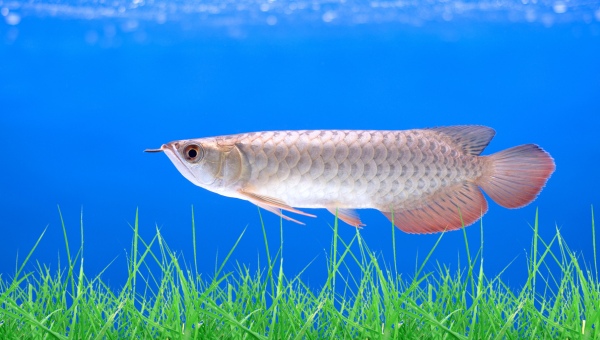
Silver Arowanas have two barbels on their head. These barbels are on the tip of their mouth. These barbels are responsible for their other nickname, "Dragon Fish."
Another distinguishing feature of Silver Arowanas is their mouth. Their mouth is nearly vertical, which is fascinating. This helps them to capture their prey very quickly. They have large eyes, and their mouths are filled with sharp teeth.
The Silver Arowana is one of the few species of fish that can look up and see what is above them out of water. They have good eyesight and can see in low-light conditions.
The scales on the body of Silver Arowanas are large and extremely tough. This is a good thing because it protects them from more giant predators. The scales are also gleaming, so they are such popular aquarium fish.
Also Read: Sailfin Pleco Care 101: Diet, Size, & More | 2023 Updated |
Silver Arowana: Origin And Physical Distribution
Silver Arowanas are initially from the Amazon River Basin and the Orinoco River Basin. These are two substantial river basins in South America.
These fish are also found in other parts of South America, including Guyana, Suriname, French Guiana, Ecuador, Peru, Brazil, and Bolivia.
But this doesn't mean they are also not prevalent in other parts of the world. They are also popular in the United States, Europe, and Asia. Silver Arowanas live in freshwater habitats.
This includes rivers, streams, lakes, and ponds. They are typically found near the surface of the water. But they have also been known to dive into depths of nearly 30 feet for food.
Also Read: Thai Micro Crab Care 101: Size, Breed, Diet & More | 2023
Silver Arowana: Adult Size And Life Expectancy
Silver Arowanas can grow to be quite large. The average size of a Silver Arowana is about 2 feet long. However, they can grow up to 3 feet long.
They can weigh up to 5 pounds. The average lifespan of a Silver Arowana is 10 to 15 years.
Silver Arowana: Behavior And Temperament
Silver Arowanas are known to be very aggressive fish. They are also known to be very territorial. It is best to keep them with other fish that can defend themselves against their aggression. Silver Arowanas are also known to jump out of the water, so keeping them in a covered tank is essential.
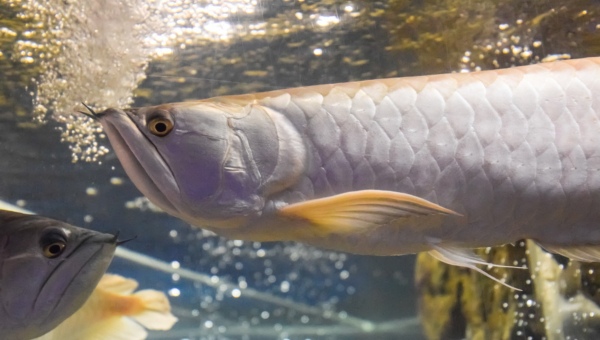
These fish are also known to be very messy eaters. They often leave behind uneaten food, which can decompose and release toxins into the water. Removing any uneaten food from the tank as soon as possible is essential.
Their behavior towards humans can vary. Some Silver Arowanas are known to be very friendly towards humans, while others can be very aggressive. It is best to avoid handling them if you are unsure how they will react.
Also Read: Beautiful Garibaldi Fish Care 101: Size, Diet, & More | 2023
Silver Arowana: Sexing And Breeding
Sexing Silver Arowanas can be a difficult task. The best way to tell the difference between a male and female Silver Arowana is by looking at their fins. Males will have longer and sharper fins than females. Females will also have a rounder body shape than males.
Breeding Silver Arowanas can be a difficult task. They are very aggressive towards each other and often fight to the death. Ensuring they are well-fed before you attempt to breed them is essential. You should also provide them with many hiding places in the tank so they can easily escape from each other.
Breeding them at home can be very difficult. If you successfully breed Silver Arowanas, the female will lay eggs, and the male will keep them in his mouth for up to 50 days until they hatch.
This is because they are mouthbrooders. The fry will be free-swimming after about two weeks. Removing the parents from the tank is essential as they are known to eat their own young.
The fry should be fed small live foods such as:
- Brine shrimp
- Bloodworms
- Daphnia
- Micro worms
It is essential to provide them with many hiding places in the tank so they can easily escape from each other. Before introducing it to the parents, the fry should be big enough to eat. Otherwise, they will be eaten.
Silver Arowana: Food & Diet
Silver Arowanas are carnivores. This means that they eat other animals. Their diet consists of smaller fish, insects, crustaceans, and amphibians.
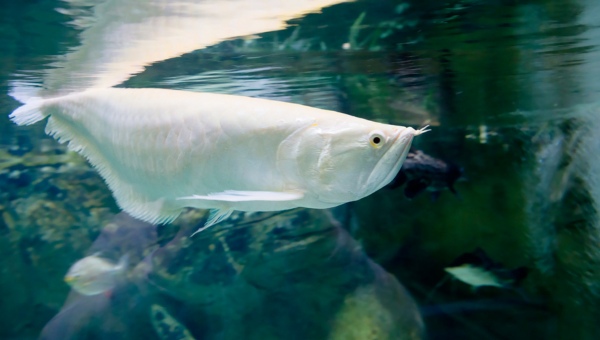
They are known to be excellent hunters. They use their barbels to help them find food in the water. Then they use their sharp teeth to capture and eat their prey.
Also Read: Best Betta Fish Food 101: Quantity, Quality, Feeding | 2023
Silver Arowana: Diet And Nutrition In Captivity
If you decide to keep a Silver Arowana as a pet, you will need to feed them a diet similar to what it would eat in the wild. This means that you will need to give them live food or fresh-frozen food.
Some of the best food for Silver Arowanas include earthworms, crickets, shrimp, and fish. You must ensure that the food you give them is small enough for them to eat.
It is also a good idea to supplement their diet with vitamins and minerals. This can be done by adding a vitamin supplement to their food or giving them pellets made explicitly for Silver Arowanas.
Also Read: Candy Cane Tetra (HY511) Species Profile| Updated| 2023
Feeding Frequency
In the wild, Silver Arowanas eat several times a day whenever they can find food. It would help if you fed your Silver Arowana 2 to 3 times daily in captivity.
Different Feeding Methods
There are different ways that you can feed your Silver Arowana. One way is to drop the food into the water and let them eat it. Another way is to use a feeding ring.
This is a plastic ring that you can put the food in. The fish must then swim through the ring to get the food. This is an excellent way to get them to exercise.
Also Read: Dwarf Crayfish Care Guide101: Appearance, Diet, & More |2023
Silver Arowana: Care
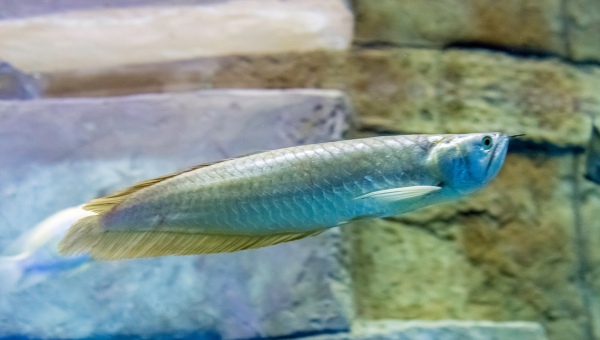
Tank Parameters
Silver Arowanas can grow up to 3 feet long; they require a huge tank. The minimum tank size for one of these fish is 250 gallons. They also require specific water conditions to thrive.
You will need an even larger tank to pet more than one. If you keep them in a small tank that is not enough to roam freely and gives them a feeling of being couped up, they might get easily stressed out.
Also Read: Jack Dempsey Fish Care 101: Size, Diet Color & More | 2023
Water Parameters
Silver Arowanas require clean, fresh water. Ensuring the water quality and temperature suits your Silver Arowana is essential. They should not be kept in water that is stagnant or dirty. The water should also be well-aerated. This means that there should be a lot of movement in the water.
The temperature of the water should be between 75 to 82 degrees Fahrenheit. The pH levels of the water should be between 5 to 7.5. It is best to aim for the middle of this range. The hardness of the water should be between 1 and 8 dKH.
Water Changes
You must do weekly water changes to maintain the proper water conditions for your Silver Arowana. You must remove about 30% of the water from the tank and replace it with fresh, clean water.
Cleaning The Tank
You will need to clean the Silver Arowana's tank regularly. This means you must remove any debris or waste from the tank. It would help if you deep clean your tank every once in a while. Cleaning your tank might consume more time than you suspect. So do it when you have plenty of time to spare.
The very first thing is to remove the fish carefully from their tank. Next, you should empty the dirty water from your tank. You can do this by siphoning or carefully pouring it into a bucket.
Once all the water is out of the tank, you should clean all the décors in your tank. This includes rocks, plants, and anything else in the tank. You can do this by scrubbing them with a toothbrush or soaking them in vinegar.
After all the décors are clean, rinse them off with clean water. The next step is to scrub the walls of your tank with mild detergent to remove any algae deposited on the walls or the bottom of the tank.
Once the tank and décors are rinsed, you can return them to the tank. Next, you should fill the tank back up with clean water.
Water Conditioners
Using a water conditioner when adding new water to the tank is essential. This will help to remove any toxins or chemicals that might be in the water. It will also help to replenish any minerals that might have been lost during the water change.
Lighting And Heating Requirements
Your Silver Arowana tank should be kept in a room with a consistent temperature. This means you must use a heater to maintain the proper water temperature.
It is also essential to provide your fish with the proper lighting. Silver Arowanas do not require special lighting, but they need a light source, not for a long time. It is suggested that you keep the lights off at night because a lot of light will promote algae growth and stress your fish.
Filtration Requirements
Your Silver Arowana tank will need to be equipped with a filtration system. This is because these fish produce a lot of waste. The filtration system will help keep the water clean and toxins-free.
A powerful filtration is a must for Silver Arowanas. We highly recommend using Fluval FX4. You should also change the filter media every month.
Substrate And Gravel
Your Silver Arowana tank should have a substrate that is made of gravel. This will help to keep the water clean and free of toxins. The gravel should be dark in color.
This will help to make your fish feel more comfortable. The aquarium should be covered by fine gravel.
Aquascaping
Plants and decorations must be placed carefully in the tank to prevent the Arowana from damaging them. They do not need a lot of plants and decorations in their tank as they like more free space to swim around.
You can still add some driftwood and some live plants to your tank. They will also provide hiding space for your Silver Arowanas and make your tank look beautiful.
Ammonia And Nitrates Level
You should test the ammonia and nitrate levels in your tank regularly. This is because these fish are susceptible to these toxins. If the levels of ammonia or nitrates get too high, it could kill your fish. They must always be kept low to ensure your fish's safety.
Protein Skimmer And Gravel Vacuum
A protein skimmer is a must for Silver Arowanas. This is because they produce a lot of waste. A protein skimmer will help remove the waste from the water before it decomposes and releases toxins into the water.
A gravel vacuum is also a good idea. This will help remove debris or waste lurking in the gravel. Both of these devices will help make the cleaning process a lot easier.
Water Test Kits
You should always have a water test kit on hand. This is because you never know when something might go wrong. If the levels of ammonia or nitrates get too high, it could kill your fish.
A water test kit will help you monitor the levels of these toxins in your tank. There are many different water test kits readily available in pet stores. It is recommended that you purchase some beforehand.
Transportation And Handling
When you are transporting your Silver Arowana, it is essential to use a container that is large enough for the fish. This is because these fish can grow to be very large.
A small tank will not be able to accommodate a full-grown Silver Arowana. It is also essential to use a bag made of breathable material. This is because these fish need to be able to breathe during transport.
When you are handling your Silver Arowana, it is essential to be careful. These fish are very delicate and can easily be injured. It is best to use two hands when you are handling them.
One hand should support the body from underneath, while the other should support the head. The entire process of handling and transporting them can be complicated as they are significant.
Silver Arowana: Potential Diseases
Silver Arowanas are known to be susceptible to a few diseases. Some of these diseases include:
- Ich (White Spot Disease): This is a common disease that can affect many different types of fish. It is caused by a parasite attacking the fish's skin. The parasites will cause the fish's skin to turn white and develop small bumps. Ich can be treated with medication, but removing uneaten food from the tank is essential as soon as possible.
- Flukes: This parasitic infection can affect the fish's gills, skin, and fins. Flukes will attach themselves to the fish and cause them to develop sores.
- Velvet: This is a parasitic infection that can affect the skin and gills of the fish. The parasites will cause the fish's skin to turn yellow or brown.
- Hole in the Head Disease: This disease is caused by a parasite attacking the fish's skin. The parasites will cause the fish to develop small holes in their head. This disease can be treated with medication, but removing any uneaten food from the tank is essential as soon as possible.
Silver Arowana: Preventing Diseases
You can help prevent these diseases by keeping your Silver Arowana in a clean and well-maintained tank. It is also essential to quarantine new fish before adding them to your tank. This will help prevent the spread of disease.
You can also help prevent these diseases by providing your fish with a healthy diet. A well-balanced diet will help boost their immune system and make them less susceptible to disease.
Silver Arowana: Treatments And Medications
A few different treatments and medications can be used to treat these diseases. Medications like Metronidazole and Levamisole can be used to treat parasites. Antibiotics can also be used to treat bacterial infections.
It is essential to follow the instructions on the medication label carefully. Some medications can be harmful to your fish if not used properly. You must see a vet if you are unsure how to treat your fish. Medications should only be given to the fish after a vet or expert consultation.
Silver Arowana: Tank Mates
Finding a suitable tank mate for your Silver Arowanas can be difficult. Silver Arowanas should not be kept with other Silver Arowanas.
It is best to keep them with bigger fish with the same level of aggression to defend themselves against Silver Arowanas easily. Silver Arowanas are also known to eat smaller fish, so it is best to avoid keeping them with fish that are smaller than them.
Some suitable tank mates for Silver Arowanas include:
- Tiger Oscar
- Red Tail Shark
- Green Terror
- Jewel Cichlid
- Fire Eel
- Pleco
- Catfish
How Many Silver Arowana Can Be Kept In One Tank?
The number of Silver Arowana that can be kept in one tank will depend on the tank size and the other fish that are kept with them. Silver Arowanas usually don't pair well with other Arowanas because they are territorial. If you can have a large pond with more than enough space for them to swim, then you can keep multiple Arowanas.
Advantages Of Having Silver Arowana In Your Tank
- Silver Arowanas are beautiful fish that can add much interest to your tank.
- In some cultures, it is believed that keeping a Silver Arowana in your tank can bring you good luck and fortune.
- They are also known to be good scavengers. They will help keep your tank clean by eating uneaten food or waste.
- They are perfect for a large tank.
Disadvantages Of Having Silver Arowana In Your Tank
- Silver Arowanas are known to be very aggressive.
- They can be territorial and may attack other fish in your tank.
- Choosing a tank mate can be a complex process.
- Silver Arowanas are also known to be good jumpers. They can jump out of the water and onto land.
Conclusion
As you can see, there is a lot to know about keeping Silver Arowanas! These fish can be a great addition to any tank, but it is essential to research before you get one. Proper care allows these fish to thrive in captivity for many years.
Be sure to do your research before you add this fish to your tank. They are fantastic fish and will bring soo much spark to your tank. They can turn any boring tank into a lively glamourous tank. So if you think of making them a part of your aquarium family, get them to your home today. Thank you so much for reading!



